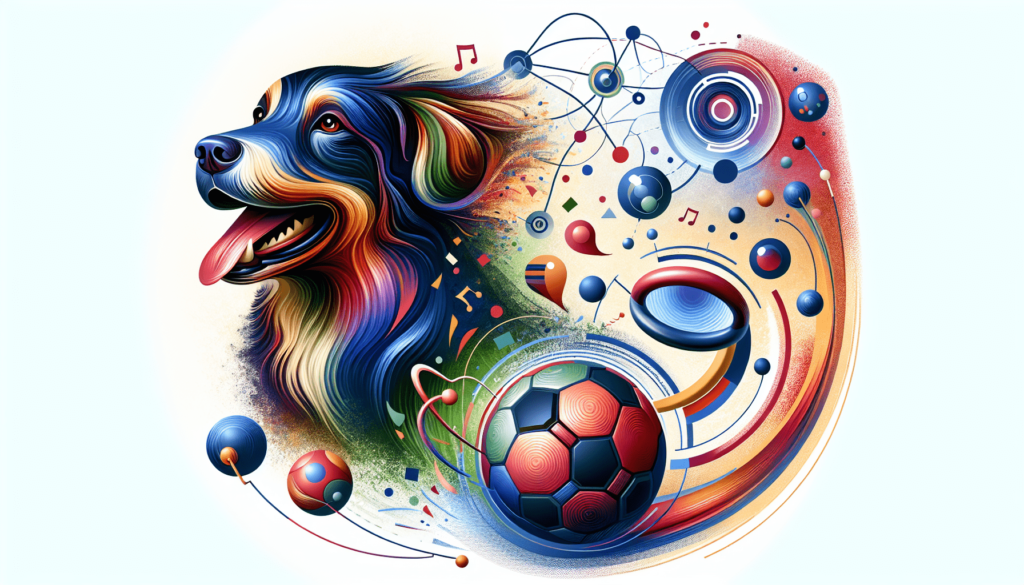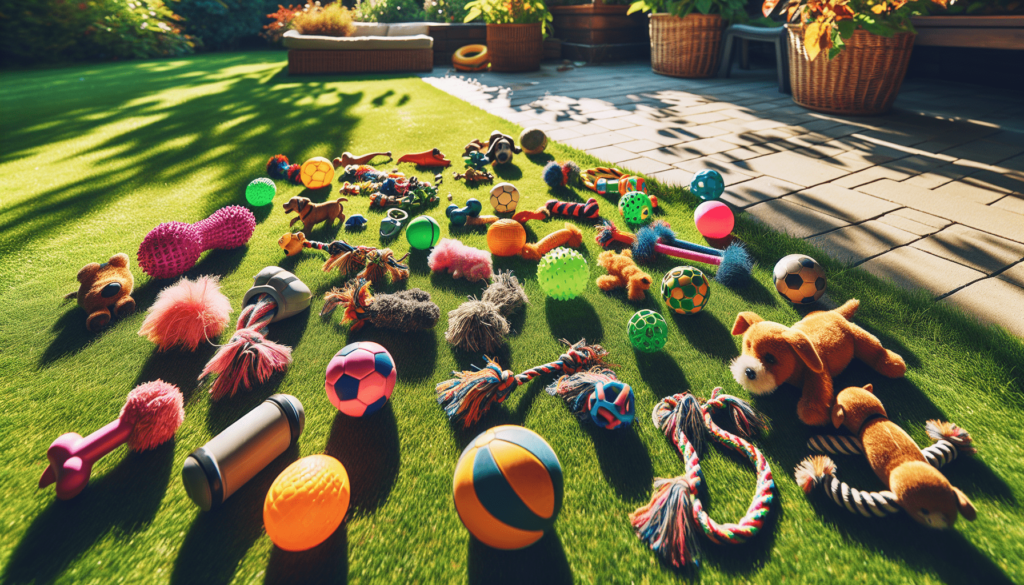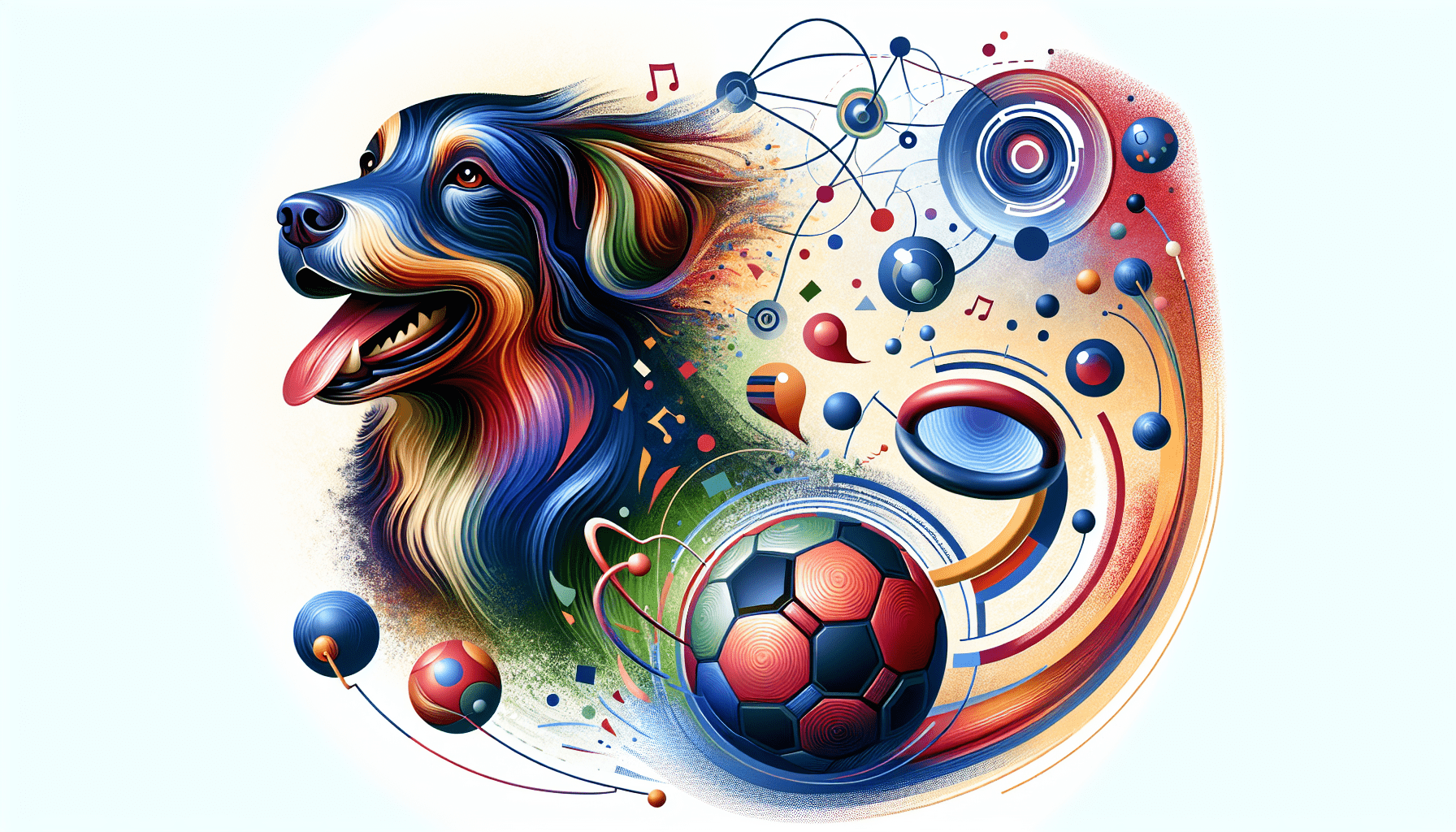Get ready to unlock the secrets of dog play and interaction! In this article, you will discover the fascinating psychology behind how dogs engage and interact with one another. From understanding the importance of play for dogs’ mental and physical well-being to decoding the complex social dynamics at play during dog-to-dog interactions, you’ll gain valuable insights into why play is such a vital aspect of their lives. So, grab a leash and get ready to delve into the captivating world of canine behavior and psychology!
The Importance of Play for Dogs
Physical Exercise and Mental Stimulation
Play is crucial for dogs as it provides both physical exercise and mental stimulation. Regular play sessions can help keep your dog healthy and fit, preventing obesity and related health issues. Just like humans, dogs need to burn off energy and stay active to maintain a healthy weight. Playtime also helps keep their minds sharp, as it engages them mentally and challenges their problem-solving skills. Whether it’s a game of fetch, a puzzle toy, or an interactive play session, playtime provides an outlet for both physical and mental energy.
Social Interaction and Bonding
Dogs are social animals and play allows them to interact and socialize with both humans and other dogs. When dogs play together, they learn important social skills such as bite inhibition, appropriate body language, and how to take turns. These interactions help them understand and navigate their social environment better. Play also strengthens the bond between you and your dog. Through play, you can build trust, enhance communication, and deepen your relationship with your furry friend.
Release of Energy and Stress
Play provides an outlet for dogs to release pent-up energy and relieve stress. Dogs may experience stress due to various factors such as changes in their environment, separation anxiety, or boredom. Engaging in play can help channel their energy in a positive and controlled manner. A good play session can leave your dog feeling tired, satisfied, and more relaxed afterward. It can also help reduce anxiety and prevent behavioral problems caused by excess energy or stress.
Instinctual Behaviors in Dog Play
Chasing and Retrieving
Dogs have a natural instinct to chase and retrieve objects. This instinct is often seen during playtime, where dogs love to fetch balls, frisbees, or sticks. Chasing and retrieving games not only provide physical exercise but also satisfy a dog’s desire to engage in this instinctual behavior. It allows them to fulfill their natural prey drive and provides mental stimulation as they strategize and plan their movements to capture the object.
Tug-of-War
Tug-of-war is a common play behavior among dogs, and it taps into their innate desire to compete and engage in a friendly struggle. It can be a great way to provide physical exercise and build strength in your dog’s jaw muscles. However, it is important to establish some ground rules to ensure safe play. Teach your dog to release the toy on command and avoid pulling too forcefully, as excessive force can lead to dental issues or accidental injuries.
Wrestling and Mouthing
Wrestling and mouthing are natural behaviors that dogs exhibit during play. It imitates the way they interact with their littermates and helps them develop coordination, balance, and social skills. Dogs use their mouths to play-bite, but it is crucial to teach appropriate bite inhibition and signal when play becomes too rough. Wrestling can be a form of play, but it’s important to monitor and ensure it doesn’t escalate into aggression or cause harm.
Predatory Actions
Dogs have retained some of their ancestral instincts, and play can bring out their predatory behaviors. During play, you may see dogs pounce, stalk, and simulate hunting behaviors. These actions are not signs of aggression but rather an expression of their natural instincts. However, it is important to recognize the difference between play and real hunting behavior and intervene if play becomes excessive or inappropriate.

Hierarchy and Social Dynamics in Dog Interactions
Dominance and Submissiveness
Dog play often involves the establishment and maintenance of social hierarchy. Dogs have a natural inclination to establish social order, where some dogs may display dominant behaviors while others may show submissive behaviors. During play, you may observe behaviors such as mounting, guarding of toys, or assertive posturing. It’s important to understand that play dominance does not necessarily translate to overall dominance in the dog’s life. However, monitoring these interactions can help prevent any potential conflicts or misunderstandings.
Role of Body Language
Body language plays a crucial role in dog interactions, including play. Dogs use their body posture, facial expressions, and tail movements to communicate their intentions and emotions. By understanding the subtleties of their body language, you can assess whether your dog is comfortable, relaxed, excited, or stressed during play. It is essential to respect their boundaries and intervene if any signs of discomfort or aggression arise.
Establishing and Maintaining Social Order
Through play, dogs establish and maintain their social order within a group. They learn important lessons about social cues, appropriate play behaviors, and how to navigate their relationships with other dogs. When dogs engage in play, they naturally establish boundaries, take turns, and learn to adapt their play style to accommodate the needs of other dogs. Being mindful of their interactions and addressing any potential conflicts can contribute to a harmonious and enjoyable play experience for all.
Importance of Age and Breed in Dog Play
Puppy Development and Socialization
Play is particularly critical during a puppy’s developmental stages. It helps puppies learn important social skills, such as bite inhibition, proper play behavior, and how to interpret and respond to other dogs’ cues. Early socialization and positive play experiences contribute to a well-adjusted, confident, and behaviorally healthy adult dog. Engaging in age-appropriate play and exposing them to various environments, sounds, and other dogs can help shape their behavior and prevent anxiety or fear-related issues later in life.
Play Styles and Preferences
Different dogs have different play styles and preferences. Some dogs may enjoy chasing and retrieving, while others may prefer wrestling or playing with interactive toys. It’s important to observe and understand your dog’s individual preferences to ensure they have an enjoyable play experience. Some dogs may be more energetic and enthusiastic, while others may be more reserved or gentle. Adjusting your play style to suit their preferences can strengthen your bond and enhance their overall well-being.
Considerations for Different Breeds
Breed characteristics play a role in a dog’s play preferences. For example, herding breeds may have a strong instinct to chase and round up objects, while sporting breeds may excel in retrieving. Understanding your dog’s breed traits can help you select appropriate toys, games, and activities that cater to their instincts and energy levels. It’s important to provide mentally and physically stimulating play opportunities that align with their breed tendencies.

Communication Cues in Dog Play
Vocalizations
Dogs use vocalizations as a way to communicate during play. Playful barks, growls, and yips are generally part of the fun and healthy play behavior. However, it’s essential to distinguish between playful vocalizations and signs of discomfort or aggression. Pay attention to the tone, pitch, and intensity of the vocalizations to better understand your dog’s emotions and intentions during play.
Body Language
Body language is a primary means of communication for dogs, and it is particularly evident during play. Dogs’ postures, tail movements, facial expressions, and ear positions can all convey important messages. A relaxed and loose body posture indicates a comfortable and playful mood, while a rigid or stiff body may indicate tension or stress. It’s important to be familiar with your dog’s typical body language and respond accordingly to maintain a safe and enjoyable play environment.
Play Bows and Invitations
A play bow is a common gesture dogs use to initiate or invite play. When a dog assumes a play bow position, with their front legs extended downward and their rear end in the air, it signals an invitation for interaction. Responding to a play bow by reciprocating the gesture or engaging in play lets your dog know that you are ready to have fun. Recognizing and responding appropriately to play invitations can foster a positive play experience between you and your dog.
Role of Play in Training and Behavior Modification
Positive Reinforcement
Play can be used as a powerful tool for training and behavior modification through positive reinforcement. By incorporating play into training sessions, you can motivate and reward your dog for desired behaviors. Whether it’s using a favorite toy or engaging in a play session as a reward, incorporating play into training sessions helps maintain a positive and enjoyable learning experience for your dog. This approach strengthens the bond between you and your dog while effectively teaching them new skills and behaviors.
Redirecting Undesirable Behaviors
Play can also be used to redirect or modify undesirable behaviors. For example, if your dog tends to chew on furniture, redirecting their attention to an appropriate chew toy during playtime can help satisfy their need to chew while preventing destructive behavior. By providing engaging and interactive play opportunities, you can redirect your dog’s energy and focus towards positive outlets and discourage unwanted behaviors.
Building Trust and Cooperation
Play provides opportunities to build trust and cooperation between you and your dog. When engaging in play, you can establish yourself as a reliable and safe source of fun and enjoyment. By respecting your dog’s boundaries, using positive reinforcement, and maintaining a playful and lighthearted approach, you foster a trusting relationship. This trust and cooperation established through play can extend to other areas of your dog’s life, making training and daily routines more manageable.
Play Preferences and Individual Variations
Toy Preferences
Dogs have individual toy preferences, and understanding these preferences can enhance their play experience. Some dogs may enjoy plush toys, while others may prefer interactive puzzle toys or balls. Experimenting with different types of toys and observing your dog’s engagement and enthusiasm can help you identify their preferred playthings. Providing a variety of toys catered to their preferences ensures a stimulating and enjoyable playtime.
Playful vs. Reserved Personalities
Just like humans, dogs have varying personalities when it comes to play. Some dogs may have a playful and energetic nature, always eager to join in on the fun. On the other hand, some dogs may have a more reserved or introverted personality, preferring gentle play or observing from a distance. Recognizing and respecting your dog’s unique personality traits allows you to tailor play activities to their comfort level and ensure an enjoyable experience.
Compatibility in Play Styles
When dogs interact and play with one another, their individual play styles can affect their compatibility. Some dogs may have a rough and tumble play style, while others may prefer more gentle and restrained play. It’s important to ensure that dogs who play together have compatible play styles to prevent any potential conflicts or misunderstandings. Evaluating play interactions and monitoring the comfort levels of all dogs involved can lead to harmonious and safe play sessions.
Gender Differences in Dog Play
Interplay between Males and Females
Gender can sometimes influence play interactions between dogs. Male dogs may exhibit more assertive behaviors, such as mounting or wrestling, while female dogs may engage in more reciprocal play. However, individual temperament and personality play a more significant role than gender alone. It’s essential to recognize and respect the boundaries and preferences of individual dogs, regardless of their gender, to promote healthy play interactions.
Types of Play Interactions
Male dogs often engage in more physical play, such as chase, wrestling, or play-fighting. Female dogs, on the other hand, may show more cooperative play, taking turns and engaging in reciprocal behavior. However, these differences are not exclusive or definitive, and individual variation should always be considered. Regardless of gender, providing diverse play opportunities allows dogs to develop well-rounded social skills and enjoy a variety of play styles.
Role of Hormones in Play Behavior
Hormones can influence play behavior in dogs, particularly during periods of sexual maturity and in intact dogs. Male dogs that are not neutered may show increased assertive or dominant behaviors during play due to elevated testosterone levels. Female dogs in heat may attract more attention from male dogs and may display altered play behavior. Neutering or spaying can help regulate hormone levels and reduce these potential influences on play behavior.
Environmental Factors and Play Behavior
Space and Environment
The environment and available space play a significant role in a dog’s play behavior. Dogs need ample space to run, explore, and engage in energetic play. Indoor play areas or outdoor parks provide opportunities for dogs to stretch their legs and enjoy off-leash play. A variety of environments, such as grassy fields, wooded trails, or water areas, can add novelty and excitement to their play experiences. Ensuring a safe and suitable play environment enhances their play behavior and overall well-being.
Availability of Toys and Playmates
Access to toys and playmates greatly influences a dog’s play behavior. Having a selection of engaging and interactive toys allows dogs to engage in solo play and keeps them mentally stimulated. Playmates, whether humans or other dogs, provide social interaction and companionship during play. Providing your dog with a repertoire of toys and arranging playdates or doggy playgroups can enrich their play experiences and prevent boredom or social isolation.
Weather and Seasonal Influence
Weather and seasonal changes can also impact a dog’s play behavior. Hot and humid weather may limit outdoor playtime, while cold or rainy conditions may require indoor play alternatives. Adjusting play activities and providing appropriate indoor alternatives during extreme weather conditions ensures that your dog’s exercise and mental stimulation needs are met regardless of the season. Adapting to weather conditions allows for consistent play opportunities throughout the year.
Recognizing Healthy and Inappropriate Play
Signs of Enjoyment and Engagement
Healthy play involves enthusiastic participation, mutual enjoyment, and a relaxed and playful demeanor. Dogs engaged in healthy play have loose, wagging tails, open and relaxed body postures, and exhibit reciprocal behavior. They may take turns being the chaser and the one being chased, indicating a balanced and enjoyable play experience. Recognizing these signs of enjoyment and engagement ensures that play remains positive and fosters a strong bond between you and your dog.
Red Flags for Aggression
While play is generally a friendly and positive experience, it’s crucial to be aware of red flags that may indicate aggression or discomfort. Prolonged and intense staring, growling that escalates beyond play, stiff body postures, or repeated instances of one dog always being the target of aggression are signs that play may be turning unsafe or inappropriate. It’s important to intervene and redirect the dogs’ attention if any red flags emerge to prevent potential conflicts or injuries.
Interventions for Unsafe Play
When play becomes unsafe or inappropriate, it is essential to intervene and redirect the dogs’ behavior. This can be done by calmly and confidently removing the dogs from the situation and providing a distraction or alternative activity. Offering a brief time-out period or engaging in a training exercise can help redirect their focus and diffuse any potential tension. Recognizing when play is becoming unsafe and taking appropriate actions ensures the safety and well-being of all involved.
In conclusion, play is an integral part of a dog’s life, providing physical exercise, mental stimulation, social interaction, and stress relief. Understanding the instinctual behaviors, social dynamics, and communication cues involved in dog play helps ensure safe and enjoyable play experiences. Considering a dog’s age, breed, and individual preferences allows for tailored play opportunities that cater to their specific needs. By recognizing the different aspects and factors that influence play behavior, you can foster a strong bond with your furry companion and help them lead a happy and fulfilled life.

